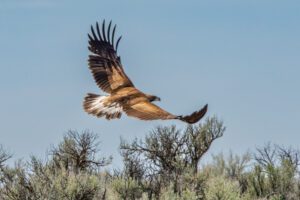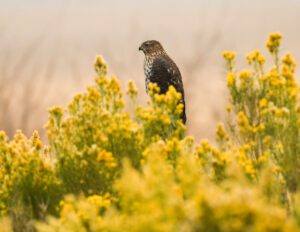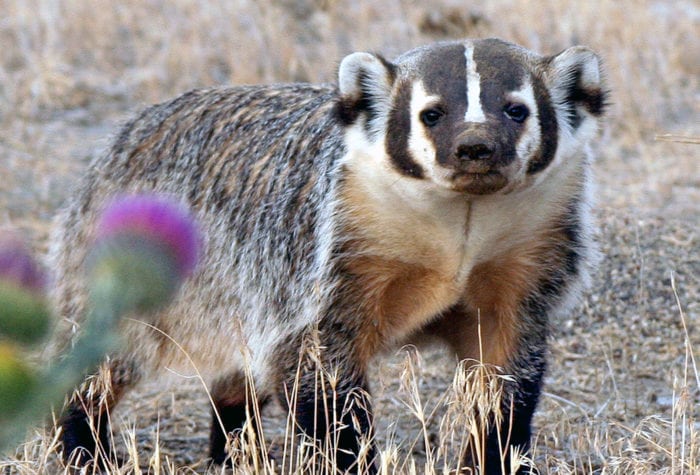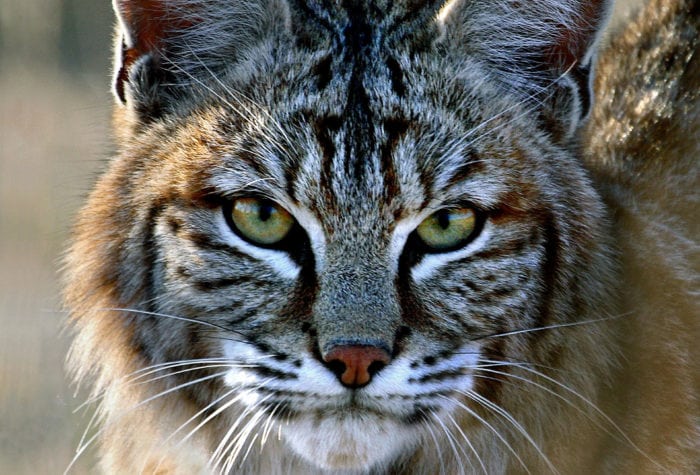Author: Craig Miller | Published: November 27, 2023 | Category: Species Spotlight
This article originally appeared in The Source on November 22, 2023.
Where, when and how to see birds of prey in Oregon’s high desert
Raptors are perhaps the most charismatic and venerated avian species in the world, and Oregon’s high desert is a great place to see them. The term “raptor” or “bird of prey” is defined as a bird that kills and eats other animals for food. Hawks and owls both meet the definition, but most owls are secretive and active during the night and therefore not easily observed. Vultures are known to occasionally prey on live animals, but their primary source of food is carrion, and so they are not considered raptors.
Oregon Raptors
There are 15 regularly occurring species of “hawks” in Oregon, each possessing its own hunting techniques and habitat preference. Therefore, no one habitat, season, or location is likely to host all species. “Hawks” can be lumped into six groups: eagles, buteos, harriers, osprey, accipiters and falcons.

Eagles: Golden eagles prey on jackrabbits, smaller mammals and carrion and are year-round inhabitants of the high desert. Bald eagles prefer fish and waterfowl, and therefore are more likely to be found near large bodies of water.
Buteos: Red-tailed hawks are by far the most common and variable hawk in Oregon, and can be found year-round in virtually every habitat in Oregon. They are frequently seen perched on utility poles looking for prey. Ferruginous hawks are high desert residents most often found in sagebrush habitat and other open range, but can also be in agricultural fields during winter. Swainson’s hawks are strictly summer residents of wide-open spaces and farmlands. Red-shouldered hawks are our smallest buteo, uncommon on the east side and quite shy, preferring tall vegetation or deciduous trees rather than open range.

Accipiters: Three accipiter species occur in Oregon: sharp-shinned hawk, Cooper’s hawk and northern goshawk. They are birds of the forest, and their specialty is hunting small birds where there is a lot of vegetation. Although they occur in Oregon year-round, large numbers can be seen migrating south in the fall.
Harrier: The only harrier species in Oregon is the northern harrier (which some people call a “marsh hawk”). While it does have a preference for marsh areas such as Summer Lake and Klamath Marsh, it also frequents open fields and farmland.
Osprey: Strictly depending on fish for its existence, the osprey is found around open water and migrates south for the winter.

Falcons: Falcons are fast flyers with pointed wings. Prairie falcons are birds of the open range, preying on small mammals such as ground squirrels, cottontail rabbits and wood rats. Peregrine Falcons specialize on small shorebirds, so are most often found near shallow lakes. Merlins feed primarily on birds, and although uncommon, can be found in a wide variety of habitats from fall to early spring. American kestrels are our most common and smallest falcon. They feed primarily on small mammals such as voles, mice and shrews, as well as insects such as grasshoppers.
Observing Raptors
When one sets about to find raptors, it helps to know not only where, but also when to look. In Oregon, some raptors are year-round residents; others fly south for the winter and still others arrive from Canada and Alaska to spend the winter in Oregon. The concentration of easily observable raptors is highest during the winter months from late November through late February and lowest during breeding season from April through June. Birds of prey are unsurprisingly attracted to areas where food is most accessible, especially large agricultural fields where ground squirrels, mice, gophers and other small mammals are abundant. Raptors are also attracted to wide open spaces like marshland, mud flats and lakes.
Raptor Hotspots in Oregon’s High Desert
Fort Rock to Christmas Valley – August through March; Prairie falcons, Golden eagles are frequent at Fort Rock State Park, and all the buteos and eagles can be found in the fields and perched on the utility poles along the road from Fort Rock to Christmas Valley.
Silver Lake – Buteos and eagles abound in the open fields along Hwy 31 from the town of Silver Lake to Picture Rock Pass. There are plenty of places to pull over to the side of the road to observe and scan.
Summer Lake Basin – February through September; all species of raptors can be seen here, depending on the season. Note: The refuge tour loop is closed during hunting season, October through January.
Klamath Wildlife Refuge – Fall and winter; especially renowned for its eagles, but all raptors occur here.
Wickiup Reservoir – Bald Eagles occur year-round, but especially during fall. Ospreys from April through October.
Paulina to Rager Ranger Station – Late fall and early spring; eagles and buteos.
Raptor Events
Another option is to learn about and observe raptors in a group setting. A great entry point is Eagle Watch, an annual celebration event at Round Butte Overlook Park, near Madras, hosted by the Oregon Parks and Recreation Department, Portland General Electric and the Confederated Tribes of Warm Springs, usually held the last weekend in February.
—Craig Miller is the geographic information system specialist at Oregon Natural Desert Association, a nonprofit organization that protects and restores Oregon’s high desert public lands and waters. Miller leads ONDA’s mapping, special analysis and field inventory work, and his roots with the organization go all the way back to the mid-1980s, when he was a founding member.


